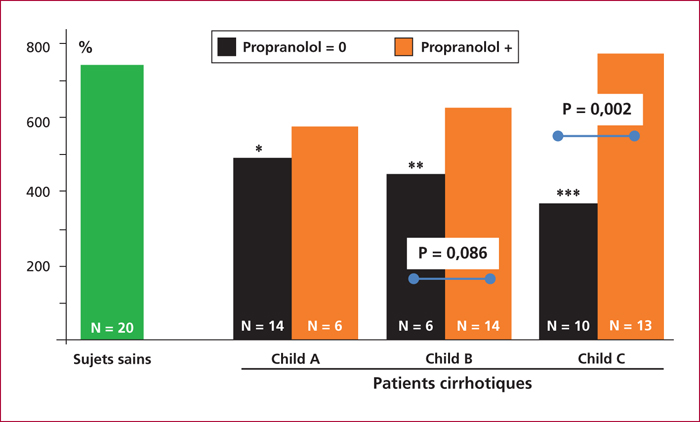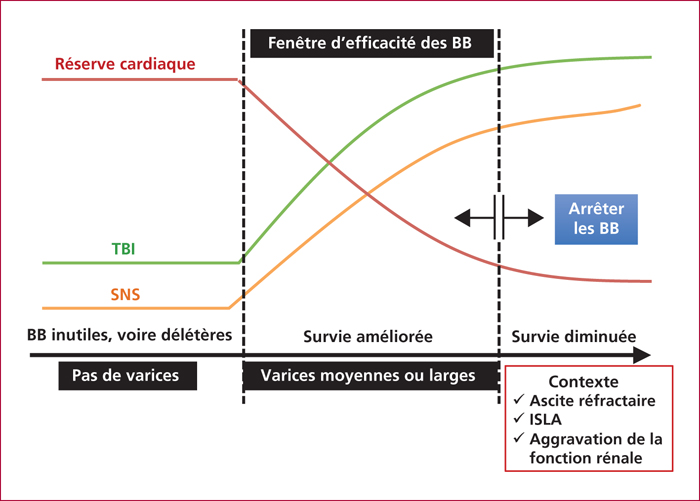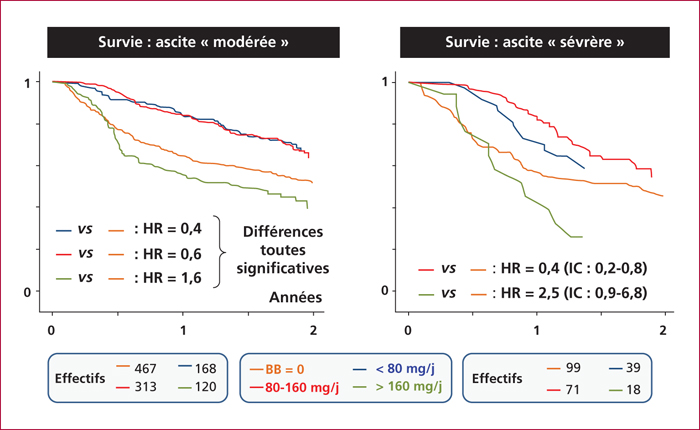Hépato-Gastro & Oncologie Digestive
MENUPosition and controversy with beta-blockers in cirrhosis in 2017 Volume 24, issue 10, Décembre 2017
- Key words: portal hypertension, beta-blockers
- DOI : 10.1684/hpg.2017.1544
- Page(s) : 1067-76
- Published in: 2017
The efficacy of non-selective beta-blockers (NSBBs) has been well established for the primary and secondary prophylaxis of variceal hemorrhage. With the progressive increase of portal hypertension over time in cirrhotic patients, blood pressure gradually decreases and heart rate increases to ensure appropriate perfusion of organs (especially the kidney). The use of NSBBs in severe cirrhotic patients in unstable hemodynamic conditions (especially after a spontaneous bacterial peritonitis (SBP) or in the presence of refractory ascites) increases the risk of hepatorenal syndrome and death, by counteracting the compensatory increase in cardiac output. In patients with decompensated cirrhosis or experiencing a drop in blood pressure, NSBBs should be stopped either transiently or definitively, depending on the hemodynamic outcome. Several studies have reported a deleterious effect of NSBBs after a SBP or in patients with refractory ascites. However, these findings lack of robustness since most of them come from observational studies yielding a selection bias that cannot be entirely controlled even though sophisticated statistical approaches were applied. A close monitoring of renal function, serum sodium and blood pressure could allow a more appropriate management of NSBBs in patients hemodynamically unstable. Hence, in patients with compensated cirrhosis, the dose of propranolol and nadolol may be progressively increased, and carvedilol, a NSBB with intrinsic α1-blockage (which increases the hypotensive effect), may be used cautiously at a maximum dose of 12.5 mg/day. In patients with refractory ascites or SBP, NSBBs should be discontinued or reduced when systolic blood pressure decreases below 90 mmHg or serum creatinine increases over 133 μmol/L ; furthermore, the dose of propranolol and nadolol should never exceed 160 mg/day and 80 mg/day, respectively, and carvedilol should be avoided in this context.




